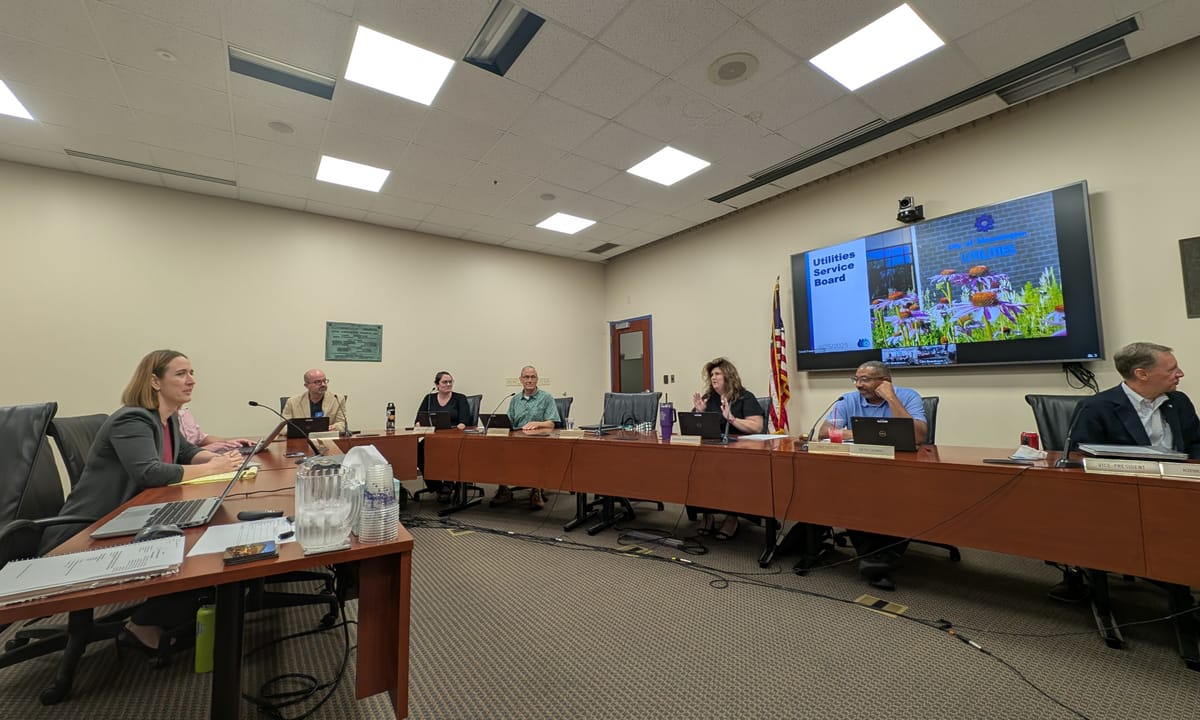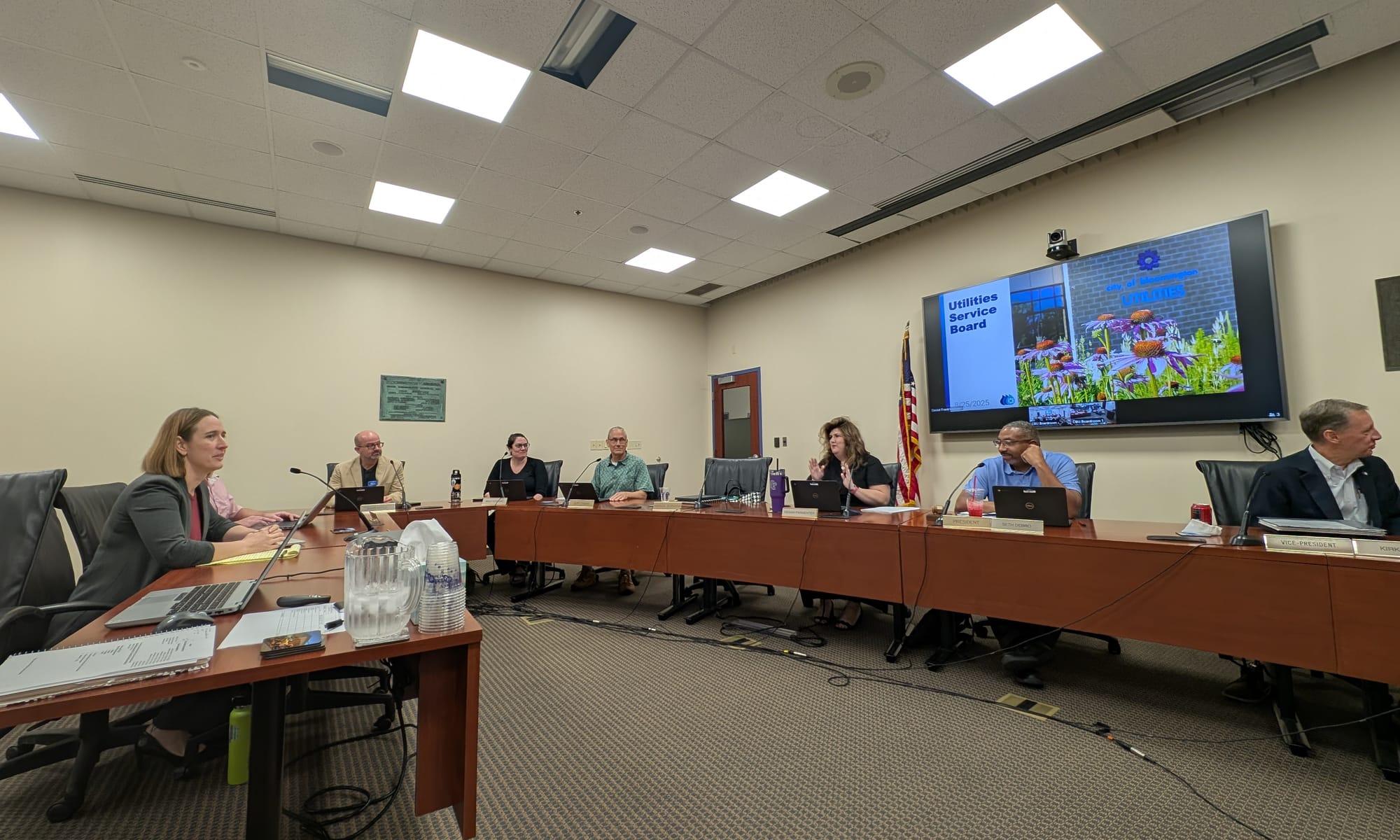Bloomington residential drinking water charges could rise 21% under CBU proposal
Most City of Bloomington Utilities (CBU) drinking water customers will be looking at a 21% increase in their drinking water bills several months from now, if a proposed rate increase unveiled on Monday is ultimately approved. A typical residential customer will pay at least $50 more a year.


Most City of Bloomington Utilities (CBU) drinking water customers will be looking at a 21% increase in their drinking water bills a few months from now, if a proposed rate increase unveiled on Monday is ultimately approved by the Indiana Utility Regulatory Commission (IURC).
A typical residential customer will pay at least $50 more a year, depending on how “typical” is defined, but most residential customers use between 3,000 and 5,000 gallons of water a month.
For residential customers, the rate is proposed to increase from $4.38 to $5.31 per 1,000 gallons of water. (1,000 gallons is a “unit” for CBU billing purposes). For residential customers who use 3 units of water a month, it works out to $2.79 more per month.
The same 21% increase in the standard water service fee—which is the basic charge all customers pay—takes it from $7.93 to $9.58, or an increase of $1.65 per month. But there’s a drop in fire protection fees of $0.38 per month.
That works out to an increase of around $4 a month, or $48 a year.
The presentation of the new rate proposal was given at Monday’s regular meeting of Bloomington’s utilities service board (USB), based on a revenue requirements study done by Crowe LLP and a cost of service study done by Stantec.
Presenting the outcome of the proposal was Jennifer Wilson with Crowe. The revenue increase is needed in part, according to Crowe’s study, in order to pay for a five-year capital improvement plan totaling $84 million. The five-year plan is supposed to replace and upgrade aging pipes, pumps, and treatment facilities.
Of that amount $54.5 million will be financed through bonds (long-term borrowing), while $28.4 million will come from ongoing revenues. The costs that the drinking water utility will expected to cover include $18.7 million for its portion of a new service center to be located at the old Winston Thomas treatment site.
In her budget presentation to Bloomington’s city council later Monday night, CBU director Kat Zaiger told the council that some of the need to increase rates is a crucial difference between the “test year” for the 2021 rate case, compared to the current proposal. A “test year” serves as a representative period for evaluating the utility’s costs and revenue needs.
For the current rate case, the test year was the calendar year 2024. For the 2021 rate case, the “test year” was the 12-months that ended March 31, 2020, which was pre-pandemic. The pre-pandemic basis did not account for the significant increases in operating expenses and project costs that have occurred since then, Zaiger said.
Zaiger also described how the amount of cash that’s available in the water fund is precarious—low enough that CBU has a contingency plan for dealing with it. Zaiger said, “If there is a shortfall, the water utility will take out a loan from the wastewater utility.” She added, “This is a one-time loan from sewer, that will be paid back, once our rate changes are implemented.” Zaiger called it a “short-term solution to getting out of the bad financial situation that we inherited.”
Lowe’s study on the required revenue for the drinking water utility determined that CBU needs to increase revenue by 30%. How does CBU expect to increase revenue by 30% if residential customers would be paying just 21% more?
That’s where customer classes and the cost of service study done by Stantec come in. Rate increases are not applied uniformly to all customer classes, which include: commercial, governmental, interdepartmental; industrial; wholesale; Indiana University; and irrigation. Some customer classes will see rate increases higher than 30%, while others (like residential customers) will see lower increases.
Two key upcoming dates include an information session at the end of this week and a scheduled vote by the USB in early September.
- Friday, Aug. 29 at 5 p.m. CBU will host a public information session to discuss the proposal, answer questions, and hear more community feedback.
- Monday, Sept. 8 at 5 p.m. The Utilities Services Board will vote on the proposed rate changes.
The board holds its meetings at the utilities service center on East Miller Drive. Zoom links for the upcoming key meetings are also included in the city’s news release.
After the USB approves the rate case, the city council will have to approve it, and then it will be docketed for approval by the IURC. For the city’s previous rate case it took about seven months for the case to go through the IURC review process.
Stormwater and wastewater (sewer) rates are not proposed to be increased this year. They will, however, likely see proposals for increases in the next couple of years.
At the USB’s Monday meeting, CBU director Kat Zaiger illustrated the impact of the proposed drinking water rate increases on a typical customer by showing a slide with her own utilities bill. Here’s the content of the slide:




Comments ()